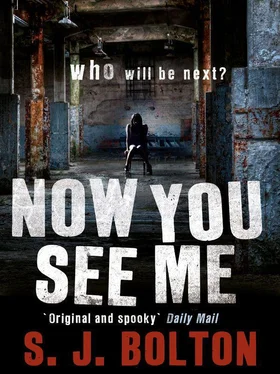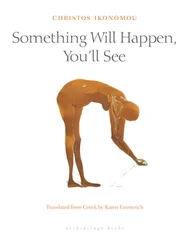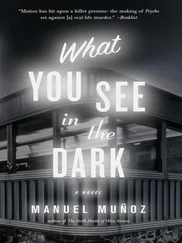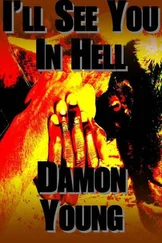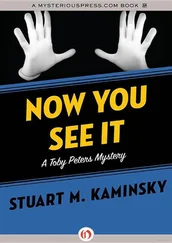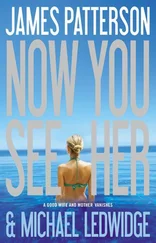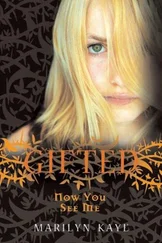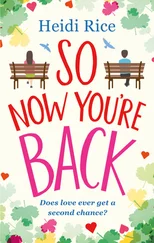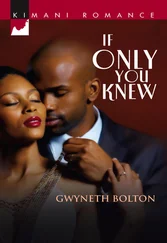Bolton, J. - Now You See Me
Здесь есть возможность читать онлайн «Bolton, J. - Now You See Me» весь текст электронной книги совершенно бесплатно (целиком полную версию без сокращений). В некоторых случаях можно слушать аудио, скачать через торрент в формате fb2 и присутствует краткое содержание. Год выпуска: 2011, Издательство: Transworld Digital, Жанр: Старинная литература, на английском языке. Описание произведения, (предисловие) а так же отзывы посетителей доступны на портале библиотеки ЛибКат.
- Название:Now You See Me
- Автор:
- Издательство:Transworld Digital
- Жанр:
- Год:2011
- ISBN:нет данных
- Рейтинг книги:4 / 5. Голосов: 1
-
Избранное:Добавить в избранное
- Отзывы:
-
Ваша оценка:
- 80
- 1
- 2
- 3
- 4
- 5
Now You See Me: краткое содержание, описание и аннотация
Предлагаем к чтению аннотацию, описание, краткое содержание или предисловие (зависит от того, что написал сам автор книги «Now You See Me»). Если вы не нашли необходимую информацию о книге — напишите в комментариях, мы постараемся отыскать её.
Now You See Me — читать онлайн бесплатно полную книгу (весь текст) целиком
Ниже представлен текст книги, разбитый по страницам. Система сохранения места последней прочитанной страницы, позволяет с удобством читать онлайн бесплатно книгу «Now You See Me», без необходимости каждый раз заново искать на чём Вы остановились. Поставьте закладку, и сможете в любой момент перейти на страницу, на которой закончили чтение.
Интервал:
Закладка:
Part Three
Elizabeth
‘For this time two victims have been required in a single night to slake what appears to be an absolutely demoniacal thirst for blood.’
Evening Standard , 1 October 1888
42
Monday 10 September
‘TWO WOMEN WERE KILLED IN THE EARLY MORNING OF 30 September 1888,’ I said. I pressed a button on the laptop and the photograph of a woman appeared on the large screen at the front of the room. Taken in the mortuary, it showed an oval face and clean, regular features. Her hair was dark, with a slight curl, and had been pinned up on the crown of her head. Her mouth was wide and generous, she might at one time have had a nice smile.
‘The first victim was Elizabeth Stride, a Swedish-born woman who moved to London about twenty years before her death,’ I said. ‘She was forty-five, separated from her husband and homeless. The murder took place in Dutfield’s Yard, a sort of courtyard that led off Berner Street in Whitechapel.’
The incident room was full, but more than one pair of eyes was drifting towards the open windows. I had a sense of people listening out of politeness. We knew who we were after now. And when we found Samuel Cooper, we could prove he was the killer. The case was all but over.
‘At twelve forty-five in the morning, she was seen arguing with a man in the gateway to Dutfield’s Yard,’ I went on. ‘That’s the last we see of her alive.’
I carried on talking but my mind was wandering. I had leave due and it was too long since I’d taken a holiday. Tiredness, and shock, had been playing some very strange tricks with my head the last couple of weeks. Then the door opened and Mark Joesbury walked in. He was in a business suit, dark grey with the faintest of pin-stripes. His shirt was white and his tie was dark-red silk and I’d lost my thread.
It took me a moment to find it again. ‘Dutfield’s Yard was overlooked by a Jewish Socialist Club,’ I said, after a few seconds glancing through my notes. ‘It was full on the night in question. Would have been noisy. At one a.m., fifteen minutes after Elizabeth was last seen, the steward of the social club arrived home and saw a woman lying on the ground with her throat cut. He later described the wound as a great gash, over two inches wide.’
Joesbury took a seat next to Tulloch. He’d shaved.
‘He went inside to get help and the police were called,’ I said, as Joesbury whispered something in Tulloch’s ear.
‘In the Elizabeth Stride case, three aspects are of interest. The first is the mystery of how the killer managed to incapacitate her in the way he did.’
‘He strangled his victims first, didn’t he?’ chipped in a man at the back.
‘It’s believed so,’ I agreed, glad of someone else to concentrate on. ‘But there were no signs that Elizabeth was strangled. No bruising around the throat or face. Yet the surgeon was convinced her throat had been cut from left to right, while she was prostrate on the ground.’
‘She thought she was about to have sex,’ said Anderson. ‘Women do that on their backs, in my experience.’
Titters from various men in the room.
‘It had been raining heavily,’ I replied. ‘The yard was covered in mud, and maybe you need to be a bit more adventurous, Sarge,’
More titters, rather more feminine in tone this time.
‘She wouldn’t have lain down voluntarily,’ I said. ‘There were lots of people near by, but no one heard any sound of a struggle. And she kept hold of a small packet of sweets while she was forced to the ground. He got her down quickly and without a fuss.’
‘These women all drank, didn’t they?’ said Joesbury. ‘Was she intoxicated?’
‘The pathologist said not,’ I replied, keeping my eyes on my notes. ‘He checked her stomach contents and found no evidence of alcohol abuse or narcotics. The police at the time were completely mystified as to how he got her on the ground.’
A car horn sounded outside. Several heads turned to the window.
‘Another reason Elizabeth Stride stands out is that she wasn’t mutilated in any way,’ I went on, anxious to get to the end now. ‘The wound on her throat was the only mark on her body. No other part of her was touched.’
‘He was interrupted,’ said Stenning.
‘In the drama I watched,’ said Gayle Mizon, popping a cashew nut into her mouth, ‘only one murder took place on 30 September. Elizabeth Stride was discounted as being one of the Ripper victims.’
‘That’s the third thing I was going to mention,’ I said, giving Mizon a quick smile. ‘Not every expert believes the Ripper killed Stride. Some people argue that because there was no sign of strangulation and because she wasn’t mutilated, her killer was a different man.’
‘The opposing argument being that because he was interrupted, the Ripper had to abort plan A and then took out his frustration on his next victim,’ said Tulloch.
‘Yes, that’s another possibility,’ I said. ‘The fourth canonical victim of the Ripper was Catharine Eddowes.’ I pressed the keyboard again and the post-mortem photograph appeared on the screen. It was taken of Catharine’s naked body and showed a massive scar running down the length of her torso. Her facial injuries were appalling.
‘At one forty-five in the morning,’ I said, ‘PC Watkins of the City Police found Catharine’s body in Mitre Square.’
‘Hang on, we’re talking less than an hour after Stride was murdered in Whitechapel,’ said Barrett.
‘That’s right,’ I said. ‘Catharine’s throat had been cut, almost back to the spine. The police doctor referred to death being due to blood loss from the left common carotid artery. Her abdomen was ripped open from her breast down to her pubic bone. Several of her internal organs were damaged. Others, including the uterus and the left kidney, were removed. Some of her organs were left strewn around her body, almost as though he was looking for something.’
The mood in the room had changed. People were listening again.
‘For the first time with Eddowes, the Ripper attacked his victim’s face,’ I said. ‘He used his knife to make incisions on her cheeks and eyelids. The lobe of one ear was cut off and also the tip of her nose.’
My colleagues seemed transfixed by the picture of Eddowes’s face. Horrible scars showed where her facial wounds had been stitched during the post-mortem examination. Beneath the damage, though, it was still possible to see that at one time she would have been a pretty woman. She’d had a heart-shaped face, high cheekbones and a smooth, clear brow, and I couldn’t help but wonder if it had just been coincidence that the loveliest of the Ripper’s victims had inspired his greatest violence.
43
FOR THE NEXT FEW DAYS I WAS THE POSTER GIRL FOR THE caring face of the Met, or as Stenning and one or two of the others insisted on calling me, Ripper-bait. I spent less than an hour a day in the station. The rest of the time I was out, visiting schools, youth clubs and community centres around south London. I linked up with the Sapphire Units and helped them give talks to groups of girls about keeping themselves safe and the importance of reporting incidents. I met Rona and her sister, Tia, over a burger lunch and was hugely relieved to find that nothing had happened yet, and that both girls were being very careful.
Other times, I was out on the streets, buying endless cartons of soup, directing people to hostels, advice centres, sometimes just talking. The days can get very dull when you have nothing to do and nowhere to go.
At lunchtime I went swimming. In the evenings, I sat in pubs and cafés, pretending to read a newspaper. I stayed out as late as I could bear, just waiting for the phone call, for the tall, thin figure of Samuel Cooper to appear in the distance. I even went to Camden on the second night, mainly to wind up Joesbury, and discovered there was a limit to how much I wanted to rile him. I went home alone.
Читать дальшеИнтервал:
Закладка:
Похожие книги на «Now You See Me»
Представляем Вашему вниманию похожие книги на «Now You See Me» списком для выбора. Мы отобрали схожую по названию и смыслу литературу в надежде предоставить читателям больше вариантов отыскать новые, интересные, ещё непрочитанные произведения.
Обсуждение, отзывы о книге «Now You See Me» и просто собственные мнения читателей. Оставьте ваши комментарии, напишите, что Вы думаете о произведении, его смысле или главных героях. Укажите что конкретно понравилось, а что нет, и почему Вы так считаете.
